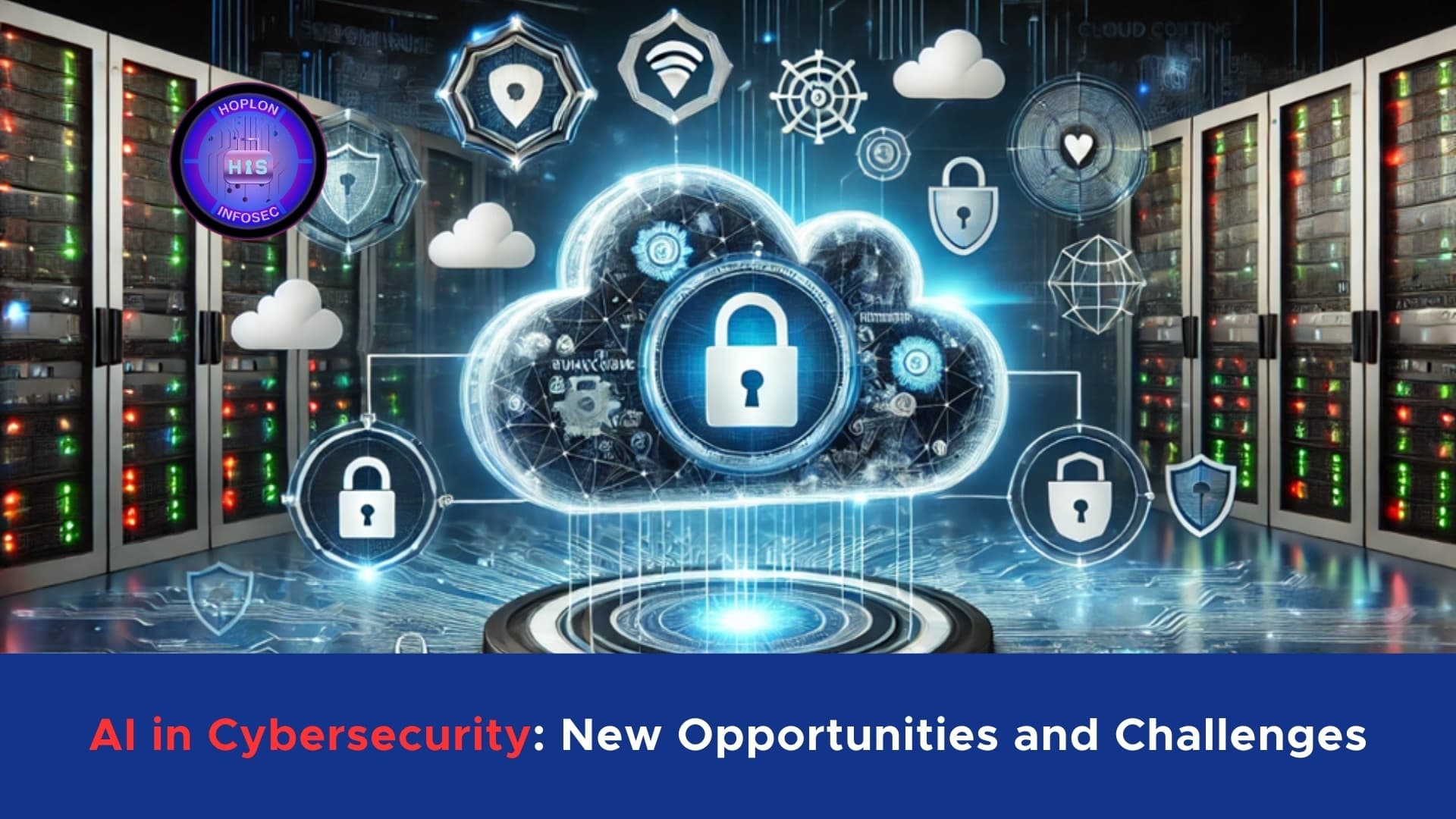Cybersecurity in the Age of AI: Opportunities and Challenges

Hoplon InfoSec
08 Mar, 2025
Artificial Intelligence (AI) has rapidly evolved from a theoretical concept to a transformative reality, influencing numerous industries, from healthcare to finance. One of the most critical applications of AI is within cybersecurity, where its capabilities are significantly reshaping how organizations defend against cyber threats. As digital transformation accelerates globally, cybersecurity threats become more complex and pervasive, making the role of AI not only beneficial but essential.
What is AI in Cybersecurity?
AI in cybersecurity encompasses leveraging intelligent algorithms and machine learning models to enhance the detection, prediction, and response to cyber threats. At its core, AI identifies patterns within large datasets faster and more effectively than traditional manual or rule-based systems. Key AI technologies used in cybersecurity include:
- Anomaly Detection: Systems that recognize unusual activities or behaviors that may indicate a security breach.
- Machine Learning Models: Algorithms trained on massive datasets to proactively identify threats, patterns, and vulnerabilities.
- Threat Intelligence: AI-driven analysis of vast amounts of data from global cyber threat databases, providing actionable insights.
Positive Impacts of AI in Cybersecurity

Enhanced Threat Detection
Traditional security measures often struggle to cope with sophisticated cyber threats due to their static and reactive nature. AI, however, excels in dynamically identifying threats as they emerge. AI can quickly spot anomalies in data and network activities using machine learning algorithms, significantly improving threat detection speed and accuracy. For instance, AI-driven security systems can identify and block phishing attacks or malicious software based on behavior patterns rather than relying solely on known threat signatures.
Predictive Capabilities
The proactive nature of AI technology enables cybersecurity defenses to predict threats before they materialize. Machine learning models can analyze vast historical datasets to detect potential future risks and vulnerabilities. AI anticipates threats by continuously monitoring patterns and behaviors, allowing organizations to mitigate risks in advance. Predictive cybersecurity powered by AI significantly reduces the likelihood of data breaches, ransomware attacks, and other damaging cybersecurity incidents.
Automated Incident Response
Speed is critical when responding to cyber incidents. AI’s automation capabilities drastically reduce the time between threat detection and response. Automated incident response systems powered by AI swiftly isolate threats, patch vulnerabilities, and restore affected systems without human intervention. This automation minimizes damage and frees cybersecurity teams to focus on more strategic initiatives rather than being bogged down by repetitive tasks.
Challenges and Risks of AI in Cybersecurity

AI-Driven Cyber Attacks
While AI brings powerful defensive capabilities, it also poses new risks. Cybercriminals are increasingly harnessing AI’s power to craft more sophisticated and challenging-to-detect attacks. AI-driven cyber threats, such as deepfake-enabled phishing, automated hacking tools, and intelligently adaptive malware, represent significant challenges organizations must prepare to counteract.
False Positives and Negatives
One of the key concerns with AI-driven cybersecurity is the occurrence of false positives (incorrectly flagging safe activities as threats) and false negatives (failing to detect actual threats). High rates of false alarms can overwhelm security teams, leading to alert fatigue and possibly overlooking real threats. Conversely, false negatives can leave vulnerabilities undetected and unaddressed, posing serious security risks.
Ethical and Privacy Concerns
AI-driven cybersecurity systems depend heavily on processing vast amounts of sensitive data. This reliance raises significant ethical and privacy issues concerning data protection, user privacy, and transparency. Furthermore, biases within AI algorithms, resulting from flawed or unbalanced training data, can inadvertently discriminate or lead to unfair outcomes. Organizations must carefully address these ethical dimensions, maintaining transparency and accountability in AI use.
Case Studies
Success Stories
Numerous real-world cases illustrate AI’s potential in cybersecurity. For example, financial institutions have adopted AI to monitor real-time transactions and detect fraudulent activities swiftly, significantly reducing economic losses. Major tech companies use AI-driven intrusion detection systems to identify and prevent cyber-attacks, safeguard sensitive data, and maintain user trust.
Malicious AI Instances
Conversely, AI-driven threats have also emerged, illustrating the technology’s dual-use nature. For instance, AI-powered bots are increasingly used in large-scale Distributed Denial of Service (DDoS) attacks, adapting in real-time to evade detection by conventional security measures. These cases underscore the ongoing battle between leveraging AI for security and exploiting it for malicious purposes.
Future Outlook
As technology advances, AI’s role in cybersecurity will undoubtedly expand. Emerging trends include:
- Explainable AI: Enhancing transparency in AI decision-making processes crucial for trust and accountability.
- Collaborative AI: Greater collaboration between human analysts and AI to maximize detection and response effectiveness.
- Quantum Cybersecurity: Preparing for quantum computing’s potential to disrupt traditional cybersecurity methods, with AI playing a crucial role in offensive and defensive strategies.
The continual advancement in AI technologies necessitates a parallel evolution in cybersecurity strategies, emphasizing adaptability, speed, and proactivity.
Conclusion
AI’s integration into cybersecurity represents a fundamental shift towards more intelligent, efficient security measures capable of confronting today’s sophisticated threats. While AI’s adoption introduces new complexities, including AI-driven attacks and ethical considerations, its advantages in enhancing threat detection, predictive capabilities, and automation far outweigh the drawbacks. Organizations should embrace AI-driven cybersecurity, remaining vigilant to its potential risks while capitalizing on its unparalleled defensive capabilities to stay ahead in an ever-evolving cyber threat landscape.
References:
Share this :